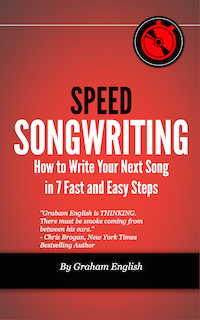
When it comes to writing a great chorus, it’s not just about finding the right words—It’s about putting those words in a harmonic world that feels like they belong. And that means choosing the right mode—the musical “color palette” that shapes the emotional tone of your melody and chords.
Many choruses fall flat not because the lyrics are bad, but because the harmony doesn’t support the emotion. You’re singing about heartbreak, but the chords sound like sunshine. Or you’re trying to throw a party, but the harmony says funeral.
Here’s how to fix that fast.
First: What’s the Mood of Your Chorus?
Before you play a single note, take five seconds to answer this:
“What’s the emotional world of this chorus?”
Don’t overthink it. Choose one word:
- Happy
- Sad
- Conflicted
- Hopeful
- Regretful
- Playful
- Bitter
- Nostalgic
Now translate that into a musical mood. This is where modes come in.
Use the Right Mode for the Job
Each mode brings a specific emotional flavor. Think of them like film filters. Here are four you'll use the most:
🎵 Ionian (aka Major Scale)
- Emotional tone: Bright, resolved, clear skies.
- When to use it: When your chorus says, “Everything’s finally okay.”
- Example: “Walking on Sunshine” by Katrina and the Waves.
🎵 Mixolydian
- Emotional tone: Upbeat, loose, fun with a touch of attitude.
- When to use it: Party songs, feel-good anthems, groove-heavy choruses.
- Example: “Sweet Home Alabama” by Lynyrd Skynyrd.
🎵 Dorian
- Emotional tone: Thoughtful, hopeful, a little blue but with lift.
- When to use it: Emotional songs that aren’t quite sad. Reflective, dreamy, groovy.
- Example: “Mad World” by Tears for Fears (or the Gary Jules cover).
🎵 Aeolian (aka Natural Minor)
- Emotional tone: Raw sadness, melancholy, unresolved longing.
- When to use it: When the chorus needs to ache.
- Example: “Set Fire to the Rain” by Adele.
Here’s How to Apply It
Once you’ve picked the mode that fits your chorus mood, use it to build your chord palette.
Let’s say you’re writing a chorus that feels playful but not cheesy. You land on Mixolydian. Great choice. Now you can use common Mixolydian chord progressions like:
- I → ♭VII → IV (G → F → C)
- I → IV → I → ♭VII (G → C → G → F)
Try singing your chorus over that progression. If it feels like the harmony wants to live there, you’ve nailed it.
Now imagine you’re writing a chorus that feels bittersweet and yearning. That’s a job for Dorian. Use progressions like:
- i → IV → i (A minor → D major → A minor)
- i → ii → v (A minor → B minor → E minor)
Play those chords and hum your chorus idea over them. You’ll hear it start to come alive.
To Get Started, Follow These 3 Simple Steps:
- Identify the Emotional Vibe of Your Chorus
Write it in one word. Is it joyful, moody, angry, dreamy? - Choose the Matching Mode
Use the chart above. Don’t get fancy—just trust your gut. - Grab a Chord Progression from That Mode
Use simple, proven chord movement. Don’t reinvent the wheel. Use what works.
Want a Template? Here’s One:
Let’s say your chorus lyric is:
“I never wanted this to end.”
That’s regret. Maybe sadness. You go with Aeolian (Natural Minor).
You pick the key of A minor. A solid chord progression in A minor:
Am → F → C → G
Now hum your line over that progression. Try this rhythm:
🎶 “I / ne-ver wan-ted / this to end”
🎶 (Am) (F) (C) (G)
Feel how it lands emotionally? That’s the power of mode + mood alignment.
Final Thought: Don’t Just Throw Chords Around
Every chorus has a job to do: land the emotional punch.
The right mode makes that punch connect.
So before you chase fancy chords or weird jazz voicings, ask yourself: What’s the mood here?
Pick the mode that supports it. Use a proven progression. And let your chorus finally sound like it means what it says.

Enter your first name and email address below and click “GET ACCESS NOW!” to get the Speed Songwriting Cheat Sheet delivered to your inbox!
We guarantee 100% privacy. Your information will not be shared.

Leave a Reply